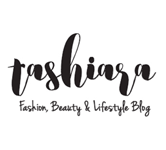Anti-pollution hair care is not a challenge : 4 preventative actions

As we bid farewell to Diwali festivities, we must make room for its aftermath on the hair and the skin. Anti-pollution hair care is often overlooked. Metropolitan Asia has been combatting air pollution and increased CO2 levels in the air since the beginning of this century. Where Diwali adds smoke to the air, the winter adds fog to this air. It's this intersection that begins a long cycle of particulate matter settlement in the scalp. This is how scalp health and hair shafts begin erosion.
To answer what it takes to protect hair against the newly surged air pollution, we should first understand how deeply pollution can damage hair. The optics of air pollution damage are more visible on the skin than on the hair. It is only when you feel buildup weighing on your head and observe unmitigated hair fall out of the blue, that you realize that your hair has undergone damage.
Let’s see what pollution could do to your hair. Tips for anti-pollution hair care follow.
How would Pollution Damage my Hair?
Hair growth depletes on exposure to petrochemicals.
Hyuk Chul Kwon, a scholar, lead a study which showcased the effects of the exposure of hair to petrochemicals. The results indicated that the proteins responsible for hair growth and hair retention were significantly reduced by exposing the scalp skin to particulate pollutant matter.
Continuous exposure without preventative care can increase the risk of alopecia and balding. Anti-pollution hair care could be your first line of defense.
Pollutants make the hair drier.
Whenever a car passes by you, your hair picks up iron and copper deposits. Other poisonous gases, transferred through general winds include NO2, SO2, and CO2. Arsenic presence in the hair is more peculiar.
Arsenic binds with the keratin in the hair and traps the pollutants. Exposure to these gases and arsenic matter degrades the hair protein. Resultantly, moisture levels take a hit and strands are brittle, breakable and drier.
Sun rays can damage the protective Hair exterior
Constant sun exposure, or general existence in tropical regions (like India), is enough outlets for the harmful sun rays to get to you. Yes, Vitamin D is necessary for general physical well-being, however, the sun also contains harmful UV-A and UV-B rays, and they can penetrate the skin and cause an imbalance of free radicals and antioxidants.
This is a blow against your body’s immune system and how oxidative stress begins on the scalp. Resultantly, sun damage manifests in the form of broken and split ends, discolouration and a drier scalp.
People with thin hair and tightly coiled hair are more likely to suffer sun damage. An ageing scalp is unable to perform antioxidant recovery as well as it could, thus preventative care must find a way in one’s hair care routine.
Now that the damage magnitude is determined, let’s dive into damage control.
Tips to begin Anti-Pollution Hair Care
Cover your hair
A scarf, a hat, or a makeshift cover. Use any of these to create the first barrier between your hair and pollutant particulate matter, as well as the sun. You already know how pollution and sun damage the hair cuticle - the external protective layer of the hair.
These sartorial choices are easy to find and personalize and can be worn comfortably, when out of the house or travelling, or running errands.

Sunblock your Hair
Sunscreen application on the ends of the hair will act as a barrier between UV rays and arsenic pollutant matter. Arsenics tend to bond with the hair protein (keratin) to trap damage. With sunscreen, harmful sun rays are bounced off the scalp surface and none gets absorbed. A cream sunscreen might sit too heavy on the hair and make the hair look flat. The water-based formula dries down quicker, without making the hair unmanageable.
Increase Antioxidant intake
Vitamins A, K and E are your best friends to naturally increase the number of antioxidants in your body. Antioxidants combat the free radicals that the body produces during metabolism processes. These free radicals attack the cells and damage the lipids and DNA.
The antioxidants neutralize the effects of these free radicals. However, with ageing, the antioxidant response of the body slows down. Which leads to unmitigated free radicals attacking body functions.
Sunflower seeds, pumpkin, almonds, green leafy vegetables, pistachio, etc. are great sources of these vitamins. The list of at-home treatments keeps increasing. Check out these DIY hair masks to reverse pollution damage.
The available anti-pollution hair care consists of a plethora of supplements. Supplements with biotin and zinc promote keratin building and strengthen the hair and nails.

Avoid Heat Styling
You already have pollution working round the clock to damage your hair cuticles. Don’t add to it with heat-intensive irons and curling. Heat protectant sprays add a preventative layer between the heat source and hair cuticle, but it is also not 100% effective.








